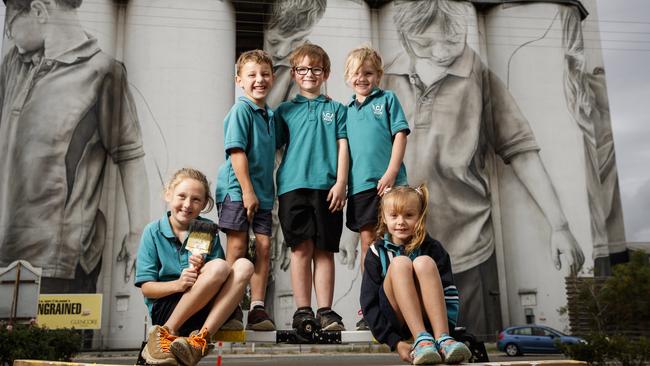Kimba’s silo art is more than tourism dollars, it’s inspiration for rural kids
AS another SA country town plans a giant artwork on its grain silos, the real value of this amazing visual movement has been revealed as being much more than tourism dollars.
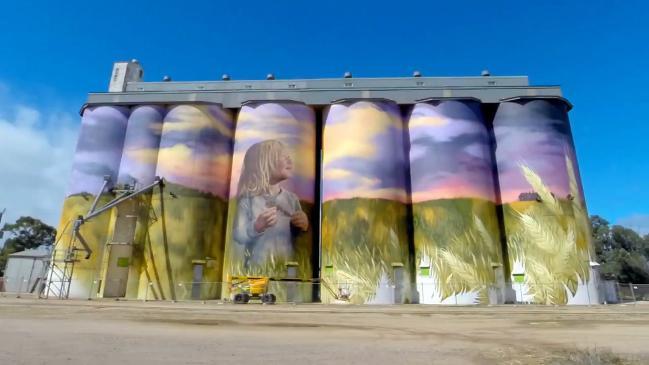
SA News
Don't miss out on the headlines from SA News. Followed categories will be added to My News.
OUT in the wheat country, the most important thing is always the next crop – and farming people know it won’t grow itself.
Conditions must be right, the field must be right but, first, they must plant a seed.
The same rules apply to the regeneration of South Australia’s cropping communities, where the crop is the young, the field is the future and the seed, perhaps surprisingly, is art.
Rising above the wheatbelts of SA, and those in four other states, elaborately painted grain silos are becoming part of the landscape.
Coonalpyn’s silos are already world famous and those at Kimba – completed last month – are probably headed the same way.
In these little towns and other such sites in Western Australia, Victoria, NSW and Queensland, the effort and expense is justified by expectable talk of tourism and economic benefits.
But the community that wants to be next is hoping for a reward that’s more important, if harder, to define.
The Eyre Peninsula town of Tumby Bay wants to paint its giant white silos. It wants them to draw travellers in from the Lincoln Hwy for a coffee, a sandwich and a top-up for the fuel tank.
But it also wants more than that. It wants to grow a future.
According to farmer Dion LeBrun, 55, one of the people driving the Colour Tumby project, “it’s all about the kids”.
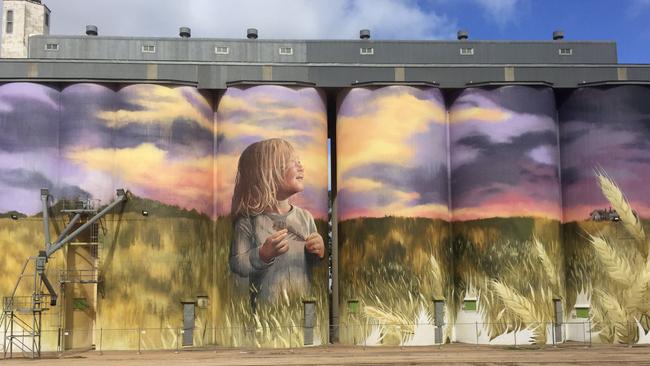
“People have got to start looking at what’s best for the long-term future of their town, and a town that’s stagnant and stuck in the past is not going to be a vibrant town for long,” he tells the Sunday Mail.
The past isn’t there any more, anyway. Tumby’s still a farming town but as farming land is consolidated and farmers using new practices and technologies employ fewer workers, the rural population of the Tumby Bay District Council’s area is falling.
The town is holding on to its number of about 1600 people, but that’s at least partly down to rural SA’s second-largest aged care population, after Victor Harbor.
That market is an economic driver but, to create jobs for the next generation, Tumby needs more.
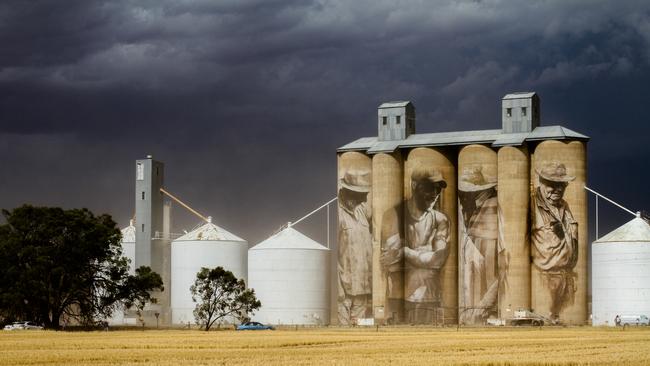
“As farming margins become skinnier and skinnier, farmers don’t have the cash, retirees are on a tight pension and they haven’t got a lot of money to throw around,” Mr LeBrun says.
A lot of traditional farming towns have even less, which seems to be behind the rush to adapt the urban concept of giant street murals to the ideal, and available, canvases of grain silos that are already local landmarks, but pretty much all the same.
Dr Jane Andrew, director of the University of South Australia’s Match Studio, says there is some danger of silo art and street murals becoming so common that they’re seen as “me-too samey”. But she says good art will always be better than a blank wall and the specific art chosen can mean a great deal to a community.
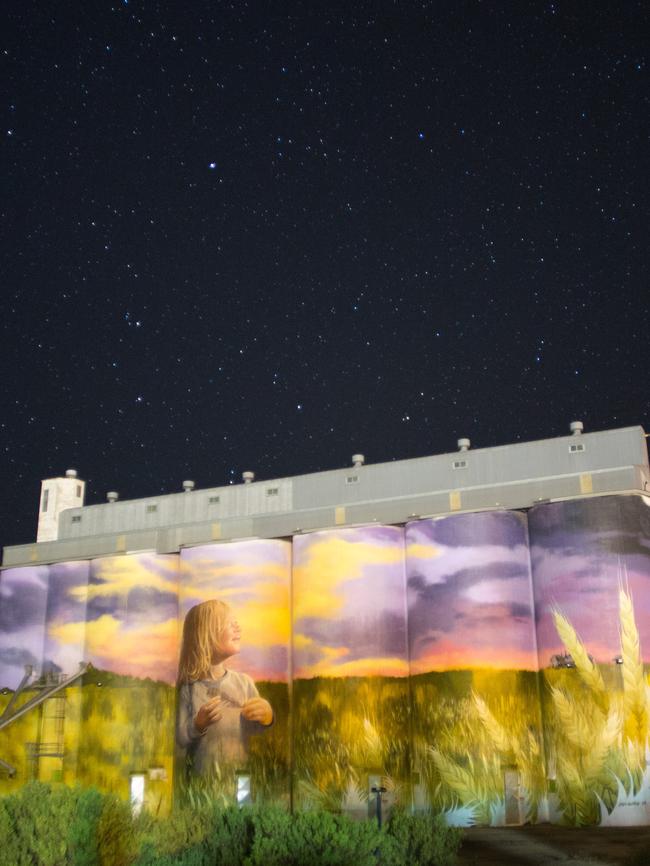
She likens the current big-art phenomenon in the country to the giant industry-linked sculptures, such as the Big Banana in NSW, the Big Pineapple in Queenland and the Big Lobster in SA, most of which were built in the 1960s and ‘70s.
“They gave those communities identities,” she says.
But Dr Andrew, who previously worked on Arts SA’s public art and design program and who has noticed the large numbers of Coonalpyn silo sightseers on her regular drives through the area, says that’s just what’s obvious from the outside.
She says such projects can start generating a benefit before a single spot of paint has gone on.
“The process of going through this, getting organised, applying for grants and working together can be really good for a community,” she says.
She says that once the artists arrive, the work begins and activity is generated around the work, a rural town’s youth could “enjoy the exposure to the broader world ... the potential to see all the different types of people who make up the world”.
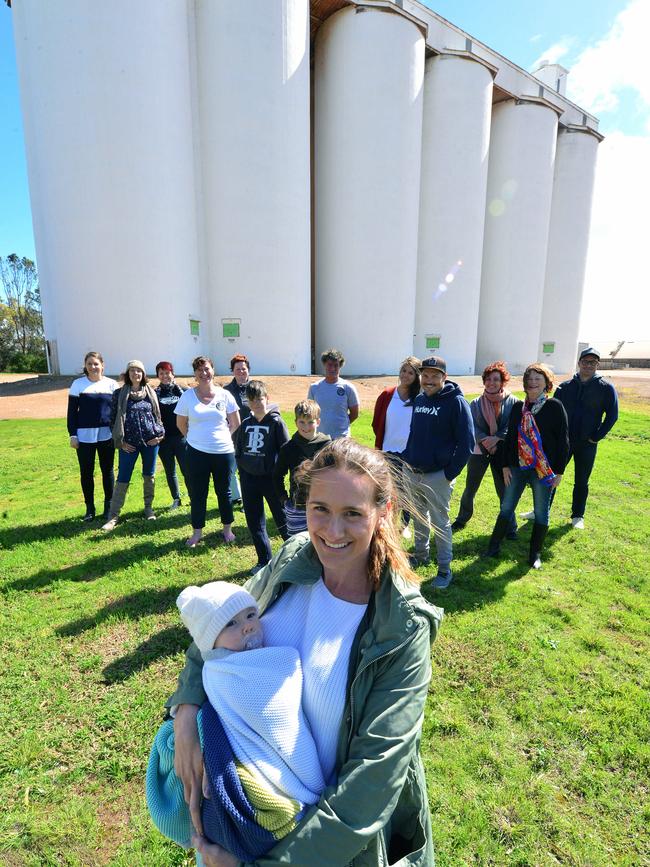
One of those people is Shaun Hossack, the founder and creative director of street-art network Juddy Roller, which oversaw work on the silos at Coonalpyn and Kimba.
These days based in inner Melbourne at the heart of the street-art movement, Mr Hossack, 33, grew up in a small town and experienced the frustrations and limitations rural kids can experience if their talents are creative rather than sporting or farming-focused.
“I was that kid,” he says. Like many, he left, but he has taken his inspiration back to hometown Benalla, where he instigated the Wall to Wall art festival now internationally famous after three years.
Tumby Bay is working with him on its project and hopes to get a similar festival up and running, with its silo art, from as early as March.
The Vittera grain-handling company, which owns Tumby Bay’s silos, has made them available free of charge, but the community needs to raise about $85,000 to get them painted and its arts festival up and running.
Mr Hossack agrees with Dr Andrew’s “Big Banana” interpretation, “although this is a newer, cooler version”.
He says rural street art – “which I’m glad to hear is now being called a movement” – had really only just begun to bloom.
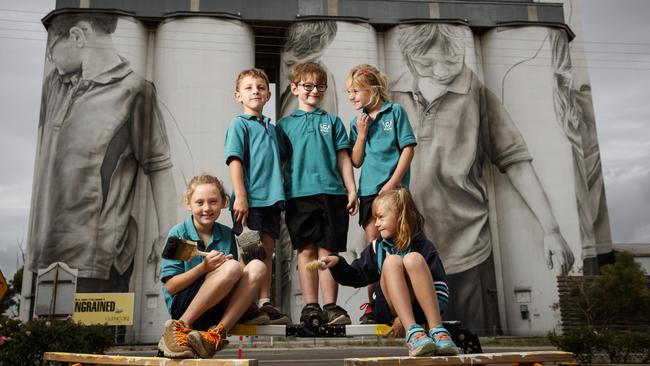
“This actually has depth and it still has a lot of life left to live,” he says.
Benalla, a town of about 10,000 people, now has 52 murals. Tumby Bay hopes to start with half a dozen or so and then build on that as a key part of a future Eyre Peninsula arts trail.
That trail would include Kimba’s silo art, created by artist Cam Scale over four weeks.
Kimba Community development chairwoman Heather Baldock says the response to the art from within the community and outside “really has been amazing”.
Kimba had always been “a can-do community because we have to be”, Ms Baldock says, but the involvement of people from throughout the area on this project had been exceptional.
“And what it has done is show our kids that anything is possible,” she says.
“Very few of our children would have had the opportunity to be exposed to something like this”.
Ms Baldock says an arts trail, already pioneered at state level in Western Australia and Victoria, could really now become a national project.
“There’s about a dozen of these around Australia now so a national trail would be great,” she says.
Apart from donating time and equipment, locals had also recorded digital images of the work and these have been edited into a stunning time lapse video.
Kimba has already begun the next stage of its project and is seeking funds to install solar-power floodlights to illuminate the silos each night.
During the art’s official opening, borrowed lights were used to show what it would like.
At Coonalpyn, district council chief executive Vincent Cammell says that project, completed in March, had “really changed the fabric of the town and brought them together in a way I don’t think has happened in a long time”. It’s also generating a dollar or two.
Brett Dewhurst, 46, who renovated an old shop previously owned by his mother, and called it the Silo Cafe, sees more than 150 customers a day.
“At Easter, you couldn’t get a car park in Coonalpyn,” Mr Dewhurst says. “It’s not just us, there’s a bakery up the road and they’re doing very well, too.”
Although a lot of people stop just to see the silos and cafe staff hear dozens of comments about them every day, Mr Dewhurst would now like to see some highway signage to let people know ahead of time that they might want to stop.
“We’ve actually had people come in and see all the people and say ‘What’s going on here?’ because they haven’t even noticed the silos,” he says.
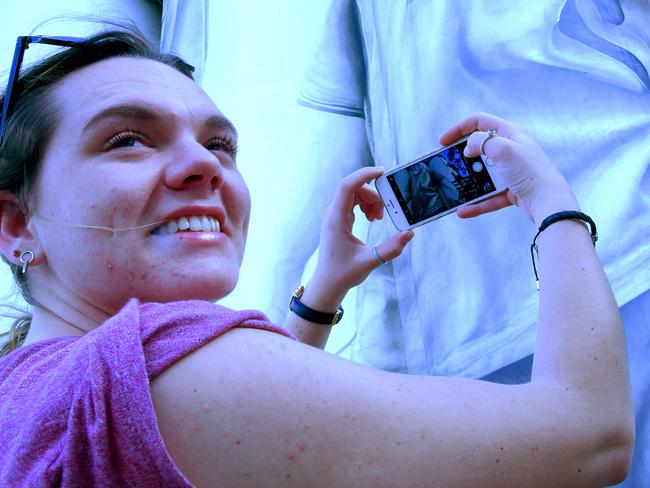
Emily Kumpis, however, did notice. The 22-year-old was on her way back to Melbourne after seeing her beloved Geelong lose to the Crows in the AFL preliminary final at Adelaide Oval when she had to stop and take pictures.
“I was speechless because it just comes out of nowhere. It surprised me and I was like ‘Wow, that’s beautiful’,” she says.
“I can’t believe someone’s been able to make a small picture into such a big piece of art. I’m genuinely impressed.”
Painted silos around Australia largely feature rural scenes and both the Kimba and Coonalpyn works feature images of children.
Tumby Bay hasn’t chosen an image yet but it’s likely it will go for something very different to keep the idea fresh.
That won’t mean kids aren’t part of the project, though, and local area school art teacher Rhianna Carmody, 23, who grew up in the town, is “very excited” about the ways it might inspire her students.
“I think kids love art because there’s no rules. With art they can be free, they can think creatively and there’s not always a right or wrong answer. They can push the boundaries a little bit,” she says.
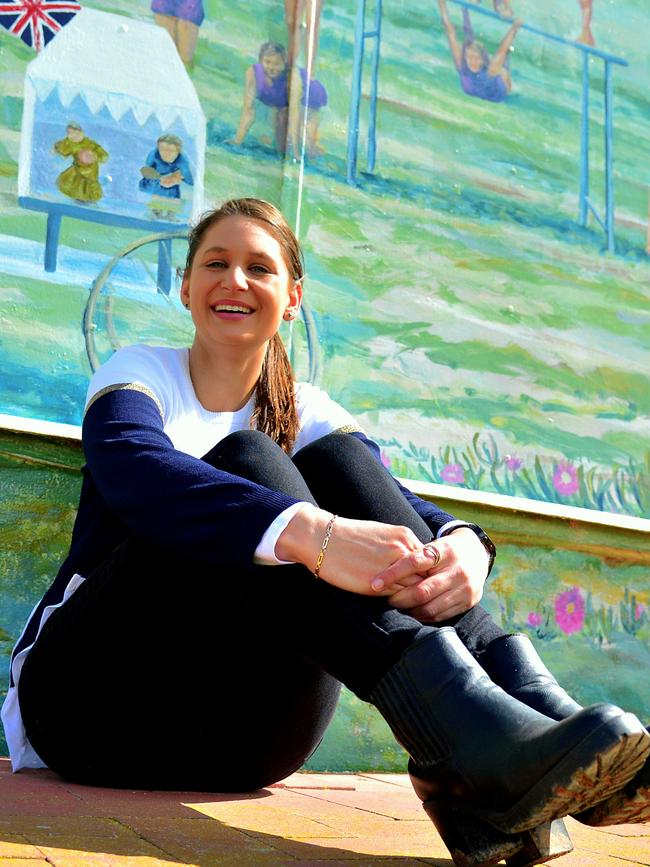
“I grew up in Tumby Bay so, for me, it is really exciting because I can see things from their perspective and now coming in as an adult and also as a teacher I can have discussions with them about what our town means to us and how special it is to us.
“I’ve got a few budding artists, got a few boys who are really into comic book kind of drawings. They’re always sketching and I would love to see some of their artworks end up on the walls and hopefully something like that can come of this.”
To donate to the Tumby Bay arts festival: Bendigo Bank account Tumby Bay Progress Association, BSB 633000, Account 160969135

